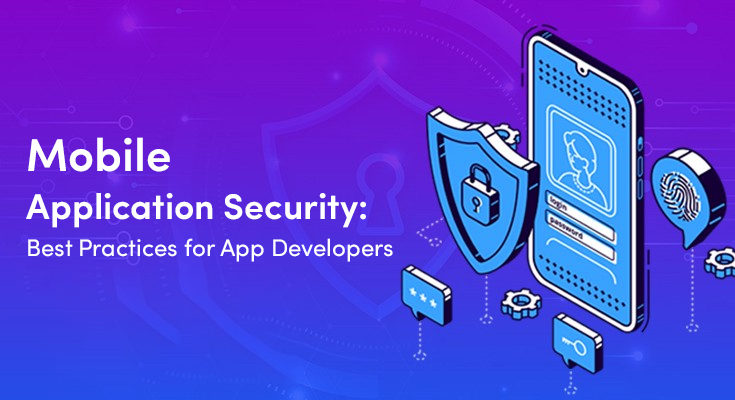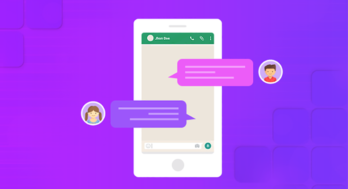There is a lot associated with security when it comes to mobile app development company. It is not about losing a lot of money from your business it is more about losing the trust of the customers for a lifetime. Once a data breach happens and the customer information gets leaked the customers feel less comfortable with sharing information.
So, from the moment you start the app development. The security should be kept as a top priority. The past has seen many data breaches and the companies have suffered a loss in millions because of it. This stolen information can be sold to criminals from the dark web that want to get the user’s personal information.
The breaches can make the life of any customer vulnerable, a data breach can leak information like user name, home address, age, account numbers, and even location that has a precision of a few meters. Thus in any case the protection of the consumer should be the top priority of developers and in case you want someone to make you an authentic app you can hire mobile app developers.
Here is a list of the 9 ways in which developers can protect their user and clients:
1. Data Encryption:
The first and most important thing that is needed to be done to secure data is data encryption. The encryption makes data scrambled in such a way that it has not any good meaning for any person who does not have a key to restore. Thus, by this method, even if you lose your data to any criminal, the data would not be readable and usable.
The encryption is so good that even agencies like the FBI ask Apple and WhatsApp for permission to get access to the data encrypted by their software. It is known that if they can’t do it, no other hacker would be able to do it too.
2. Apply the authorized APIs:
Experts recommend that the APIs should be centrally authorized to generate maximum security. A developer can make easy calls to API in case the code is locally catching Authorization information, but it gives hackers a loophole that can give hackers privileges. Thus if the APIs are not authorized and are loosely coded then you might unintentionally provide hackers data access to data that is important to you.
3. Deploy technologies to detect tampering of code:
There exist technologies that can detect malicious behavior in code. In any case, if the data in the code change the technologies can deny the functioning of code entirely. These technologies trigger an alarm that gives the developer information regarding malicious behavior and asks them to make changes.
4. Do testing frequently:
Keeping the app secure is a task that has no beginning and no end. You have to keep checking and investing time and money in testing. Fix any vulnerability that gets detected at any step. These fixes should be set with the next update as soon as possible.
5. Use the best Cryptography tools:
The encryption efforts pay off only in case you manage your keys properly. Never hardcode keys and never store them in your device locally. Always store keys in containers that are secure enough. Modern security standards need you to use the latest trusted APIs like the SHA-256 for hashing and 256-bit AES encryption. Recent studies have found the older cryptographic protocols ineligible for modern-day data security standards.
6. Deploy Session Handlers:
To handle sessions as a developer you need to use tokens instead of earlier used device identifiers as they can be revoked at any time. Since “sessions” on mobiles last longer in comparison to the desktop devices. Another benefit of using tokens is that they can help in securing data in case of loss of the device. By enabling remote wiping and remote log-off in a stolen/lost device, data can be removed from the device and you can deny access to the data in that device.
7. Write a secure code:
The least of all, you need to write secure code. Vulnerabilities and bugs are the key points from where the hackers start to break into the application. They can easily reverse engineer the tampered code and insert malicious data in your code. It is researched that millions of devices are affected by malicious code at any given time. Thus, try to write the code in a way it is less likely of getting any breakthrough. Ensure that the code can be easily updated in case of discovery of any vulnerability.
8. Be cautious with third-party libraries:
Make thorough checks in any third-party library that you are going to use. Some libraries can be exceptionally useful for your application but they also can be extremely insecure. Certain libraries are known to have security vulnerabilities so make sure you have made the complete check with the usability of the library. Developers should exercise various policy controls before applying acquisition.
9. Encourage high-level authentication:
As the cybersecurity issues are known to get wider and stronger, it has become increasingly important to have a higher level of authentication for access to user data. Authentication simply refers to the person identifiers and passwords that in turn are used as a barrier to consumer information. A developer needs to encourage users to be more sensitive with passwords by accepting strong alphanumeric passwords.
Another method is gaining prominence recently that is based on multi-factor authentication. In this, a user needs to verify credentials with a combination of dynamic OTP and static passwords.
Knowing all of this and the trends of recent cybersecurity issues, any developer should take responsibility for making code less vulnerable by using the most modern technology and the best available tools. The security of an app is associated with the security and trust of your consumers. So, never fast forward the code writing and always think twice about the vulnerability of the code you are writing.
Sometimes, improving security might lead to a little extra investment in terms of time and money but it is the basic necessity of any app and should not be avoided under any circumstances. Continuous improvement in code and making bug fixes is an important part of mobile application development security.



